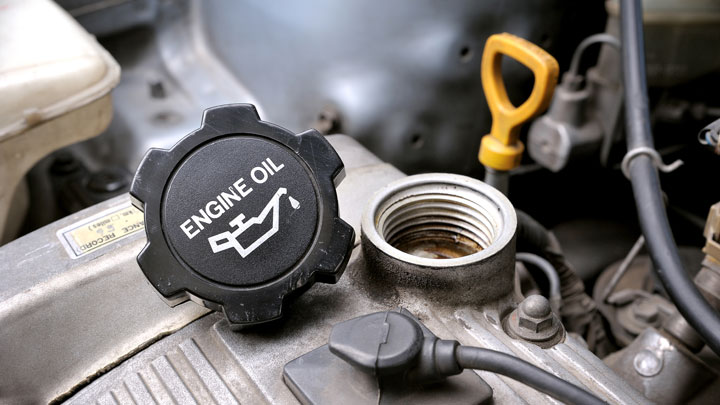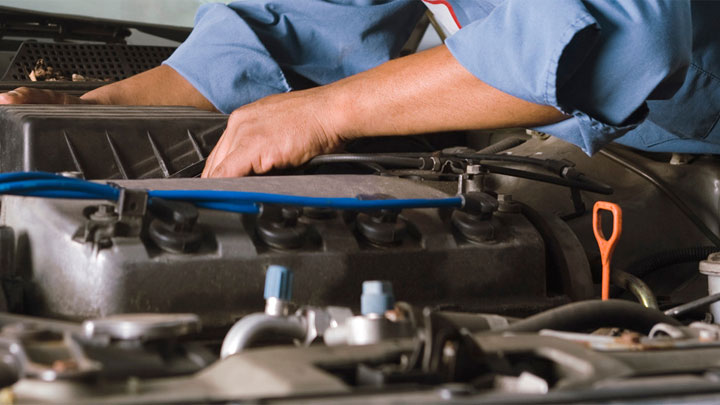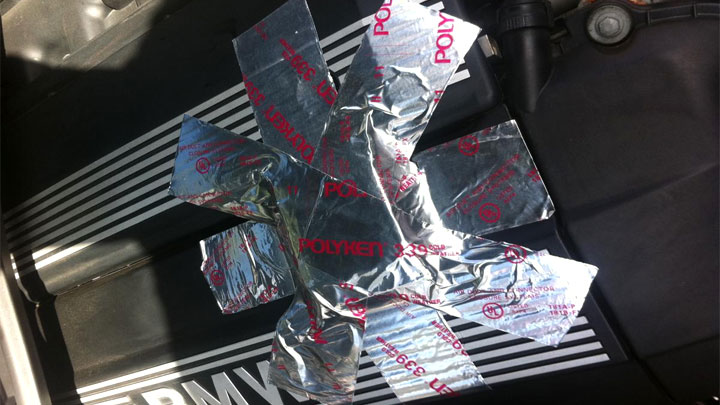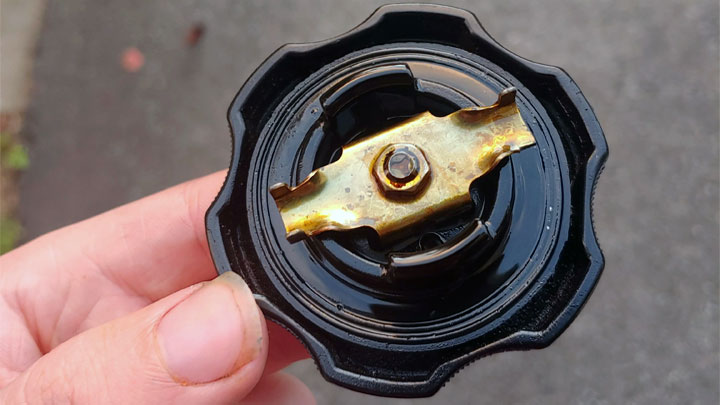Last Updated on July 27, 2022
Over the course of a lifetime, the average motorist will find themselves contending with a number of odd situations. When such circumstances arise, one must assess the gravity of the situation itself, while also determining how best to proceed. At times, this in itself is quite a chore and requires a certain degree of forward-thinking.
One question of this nature revolves around whether or not it is ever okay to drive without an oil cap.
While some might never face this question themselves, those that do are often left perplexed. Will driving without an oil cap cause problems, and if so, what other options does the average motorist have at his or her disposal when a functional oil cap is unavailable?
Read on to learn more about whether or not it is ever okay to drive without an oil cap, as well as what to do, should you find yourself faced with such a question in the future.
See Also: 10 Cheapest Places to Buy Motor Oil
Why Would a Vehicle Have No Engine Oil Cap?
There are a few probable circumstances under which a vehicle’s oil cap would be missing. The first of which centers around a failure to reinstall an engine’s oil cap following routine service. This, unfortunately, occurs more often than one might be led to believe, and can pose quite the issue for motorists.
Similarly, one can fail to tighten an engine’s oil cap following an oil change, thereby allowing it to rattle around freely until it eventually dislodges and disappears into the engine bay itself. Under these circumstances, it is often difficult to locate a missing oil cap in a timely manner.
Though somewhat less likely, an oil cap can also be damaged to the point of interoperability, during reinstallation. With time, oil caps tend to become brittle due to repeated heating and cooling cycles. This makes them prone to cracking and thread failure with age.
Read Also: Common Oil Change Scams to Avoid
Is It Safe To Drive Without an Oil Cap?

It is never safe to drive without a vehicle’s oil cap securely installed.
An oil cap serves two distinct purposes, both of which are vital to the prolonged health of an engine. The first of these purposes served by an engine’s oil cap is to prevent the loss of oil out of an engine’s open “fill” orifice. This opening is often positioned atop an engine’s valve cover, or along the side of an engine’s block.
The second purpose of an engine’s oil cap is to prevent airborne contaminants from finding their way into an engine’s lubrication system. These contaminants can range from dirt and dust, to large debris such as gravel kicked up when traveling down the road.
Contamination of an engine’s lubricating system can ultimately lead to irreversible internal damage.
What Can Happen When Driving Without an Oil Cap

If you choose to drive your vehicle for any prolonged period of time without a properly installed oil cap, you risk the ultimate well-being of the engine itself.
As mentioned above, without an oil cap, your engine is allowed to expel lubricating oil, and intake airborne contaminants. Both of these scenarios can prove devastating to the overall longevity of an engine.
A loss of lubricating oil from a vehicle’s uncovered oil fill orifice can cause oil starvation, overheating, and accelerated internal wear. The more oil an engine loses, the more pronounced these consequences become. In the most severe of cases, engine failure cannot be ruled out.
Likewise, contamination of a vehicle’s internal components by airborne debris can prove dire, as internal engine wear is accelerated. Contamination of this type is also known to cause severe overheating, as an engine is unable to shed and radiate heat as it otherwise does by design.
What To Do if Your Oil Cap Falls in the Engine Bay and You Can’t Find It

In many cases, it can be difficult to locate an oil cap that has fallen into a vehicle’s engine bay. More often than not, this cap is not easily visible, leaving one without much in the way of recourse for locating it. However, there are a few steps that can be taken to assist one in their search.
Oftentimes, especially on late model vehicles, a dropped oil cap can be found perched on the upper side of a vehicle’s under-paneling. This protective plastic is usually affixed with little more than a few push clips, or a handful of bolts. Removing these fasteners and dropping this under-paneling will often reveal the location of a lost oil cap.
Certain oil caps also feature integrated metal tabs, which are used to lock an oil cap in place. This is especially true of oil caps that are designed to turn to a stop at 90 degrees.
If your oil cap is of this type, an extendable magnet pickup tool can be used as a valuable tool in your search. Simply fish around with this magnet until making contact with the lost oil cap, in ultimate hopes of recovery.
Is There a Temporary Fix for a Missing Oil Cap?

In the event that an engine’s oil cap is lost, you are much better off engineering a temporary fix, rather than driving as is.
One common method of achieving this goal is by fixing a rag over the open oil fill orifice with one or more zip-ties. This holds the rag in question, thereby preventing excessive oil loss.
Duct tape can also be used in place of an oil cap on a temporary basis. Tape of this nature should be applied in layers, in order to guarantee securement. It is also helpful to apply this duct tape in alternating directions to form a ¨star¨ pattern, as doing so often provides better adhesion.
In any event, care should be taken to prevent dropping any debris into an engine’s oil fill orifice, while rigging up a temporary repair, as contamination of any type can ultimately cause internal engine damage.
It is also important to remember that a repair of this type is only temporary in nature, and should never be relied upon for any longer than it takes to secure a replacement oil cap.
Are Oil Caps Universal?

While some oil caps might interchange between two or more vehicles, most are far from universal in design. Quite the contrary, most manufacturers produce their own proprietary oil caps, which thread into an engine’s fill orifice in different manners.
While some oil caps thread securely into a particular orifice, others simply turn 90 degrees and lock into place, without the need for additional threading. As one might guess, these two particular types of oil caps are not cross-compatible.
Engine Oil Cap Replacement Cost
Best places to order parts? See: 19 Best Online Auto Parts Stores
The cost associated with oil cap replacement is nominal at worst and is far cheaper than the cost for repair that is often incurred after months of running an engine without an oil cap.
The exact cost of an oil cap varies considerably from one model of vehicle to the next. However, most oil caps can be purchased for somewhere in the range of $10-$50.
In certain instances, shipping or freight charges might be added to the overall cost of a replacement oil cap. This is especially true of oil caps that must be ordered, due to a lack of stock at one or more retail locations.
Where Is the Best Place To Buy an Oil Cap?
A replacement oil cap can be sourced from almost any local parts house, with little difficulty. All you will need to know is the year, make, and model of your vehicle. Many parts stores even keep an array of oil caps in stock, thereby saving consumers excess hassle.
Alternatively, a replacement oil cap for most vehicles can also be ordered via a number of websites on the internet. In many cases, expedited shipping can also be selected for an additional charge, making it possible to receive your replacement oil cap in as little as 1-2 days.





I think all related with car and vehicles have to be careful for everything, not only an oil cap, if there’s insufficient water will cause an engine heating, to the filling stations often people lose gas tank caps after the car is already being filled petrol or diesel, because when they open it, they put it on the car body after that they forgot to fix it to the tank.